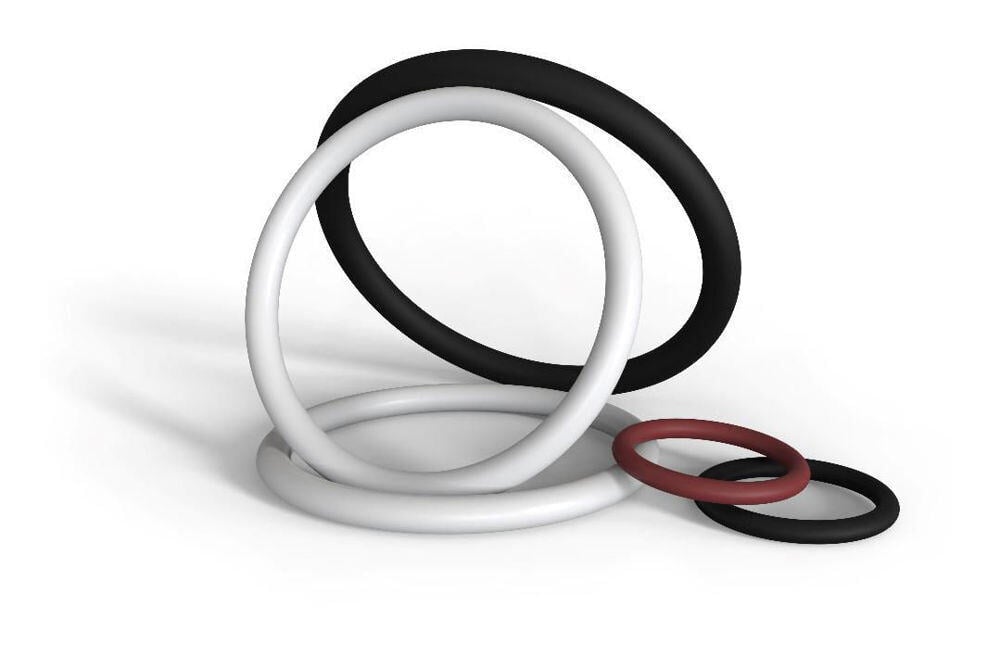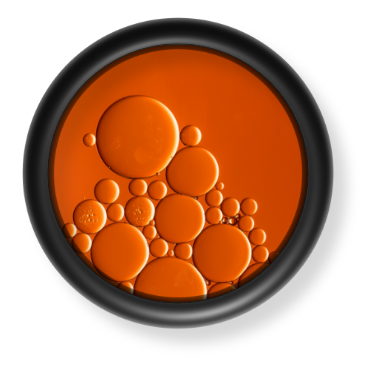You can have the most innovative, high-tech equipment, but a poorly chosen O-ring can render it inoperable. The right O-ring in both material and size is essential for ensuring reliable performance, safety, and longevity.
Whether you're working in aerospace, oil & gas, or manufacturing, understanding how to select the correct O-ring is critical.
Start with Material Selection
Material selection is your first and arguably most important decision when choosing an O-ring. Different industries and environments demand different material properties.Here’s a quick reference comparison:
| Material | Temp Range (°F) | Strengths | Typical Applications |
|---|---|---|---|
| Nitrile (Buna-N) | -40 to 250 | Oil resistance, durability | Automotive, industrial machinery |
| Fluoroelastomer (FKM/Viton) | -15 to 400 | Chemical resistance, heat tolerance | Aerospace, fuel systems |
| Chloroprene (Neoprene) | -65 to 250 | Weather & ozone resistance | HVAC, refrigeration (Freon®) |
| Silicone | -80 to 450 | Extreme temp tolerance, flexibility | Medical devices, lighting seals |
| Highly Saturated Nitrile (HSN) | -40 to 325 | Heat and chemical resistance | Oil & gas, transportation |
| EPDM | -65 to 300 | Steam, water, Skydrol® resistance | Food-grade, aerospace hydraulics |
| PTFE | -65 to 500 | Low friction, chemical inertness | Semiconductor, pharma |
| Aflas® | +25 to 450 | Electrical and chemical resistance | Power generation, chemical processing |
Tip: Start by understanding what fluids, temperatures, and movement types your O-ring will be exposed to. Match those variables to the ideal elastomeric material.
Temperature Resistance Matters
Extreme heat or cold can drastically affect O-ring elasticity and sealing performance. For example:
- In cold environments, O-rings can become brittle and crack.
- In high-heat settings, they may soften and degrade over time.
Always cross-reference your working temperature range with the material’s rating to avoid premature failure.
Consider Operating Pressure
- For low to moderate pressures, a standard 70 Shore hardness works well.
- For high-pressure applications (1500+ psi), consider upgrading to a shore hardness of 80–90 to maintain shape under stress.
In dynamic systems like hydraulic pumps or piston cylinders, this change can be a make-or-break decision.
Surface Finish Impacts Longevity
For dynamic sealing applications:
- Ideal finish: 5 to 16 µin RMS
- Static sealing: Up to 64 µin RMS is acceptable
Improper surface finishes can increase friction, leading to premature wear and reduced effectiveness.
Understand Stretch and Fit
Your O-ring must sit slightly stretched in its groove to seal properly. Best practices:
- Target stretch: 2% is ideal
- Acceptable range: 1–5%
Over-stretching can distort the O-ring, while under-stretching can cause sealing gaps.
Cross-Industry Examples
Oil & Gas, Petroleum, and Energy
O-rings in these industries must endure extreme temperatures, aggressive chemicals, and high pressures. APG offers materials like Aflas® and FKM that provide excellent resistance to gas, steam, amines, and hydrocarbons – ideal for downhole tools, valves, and refinery equipment.
Semiconductor Manufacturing
Semiconductor processes demand ultra-clean, chemically resistant sealing solutions. APG’s PTFE and FFKM O-rings are designed to perform in plasma etching, wet processing, and vacuum environments where contamination is non-negotiable.
Aerospace
In aerospace, precision and reliability are critical. APG supplies O-rings for use in fuel systems, hydraulic lines, and engine components, using materials like EPDM, and Vitron® that meet stringent temperature and chemical exposure requirements.
Automotive
From fuel injectors and transmission systems to braking components, APG provides Buna-N and HNBR rings that deliver performance under high pressure and constant motion. Our O-rings support both traditional and electric vehicle designs.
Hydraulic Systems
Sealing in hydraulic systems requires strength under pressure. APG's O-rings in NBR, HNBR, and FKM provide robust performance in cylinders, pumps, and valves where high-pressure dynamic motion is present.
Manufacturing
From robotics to automated conveyors, APG’s versatile O-rings help manufacturers maintain uptime by providing dependable seals in equipment exposed to heat, vibration, and abrasive materials.
Construction
Heavy-duty equipment like excavators, concrete pumps, and compressors depend on O-rings that hold up to rough use and weather conditions. APG offers rugged, field-tested sealing options for demanding construction environments.
Chemical Processing
Safety and reliability are essential in chemical processing plants. APG’s chemical-resistant elastomers ensure leak prevention in applications involving caustic fluids, acids and high temperatures.
Pulp & Paper
Wet, abrasive, and chemically treated environments are common in pulp and paper operations. APG supplies EPDM and PTFE O-rings that provide sealing in rollers, pumps, dryers, and chemical dosing equipment.
Conclusion: Choose with Confidence
Choosing the right O-ring is more than just picking a part number. It’s a crucial decision that affects reliability, safety, and performance across nearly every industry.
Next Steps: Let’s Help You Seal the Deal
At APG, we offer a comprehensive selection of standard and vulcanized O-rings in materials for every application. Our technical team is here to guide you through your selection process.
Browse O-Rings Now
Need help choosing? Contact an APG Expert









 +1 800-888-5223
+1 800-888-5223





.png)